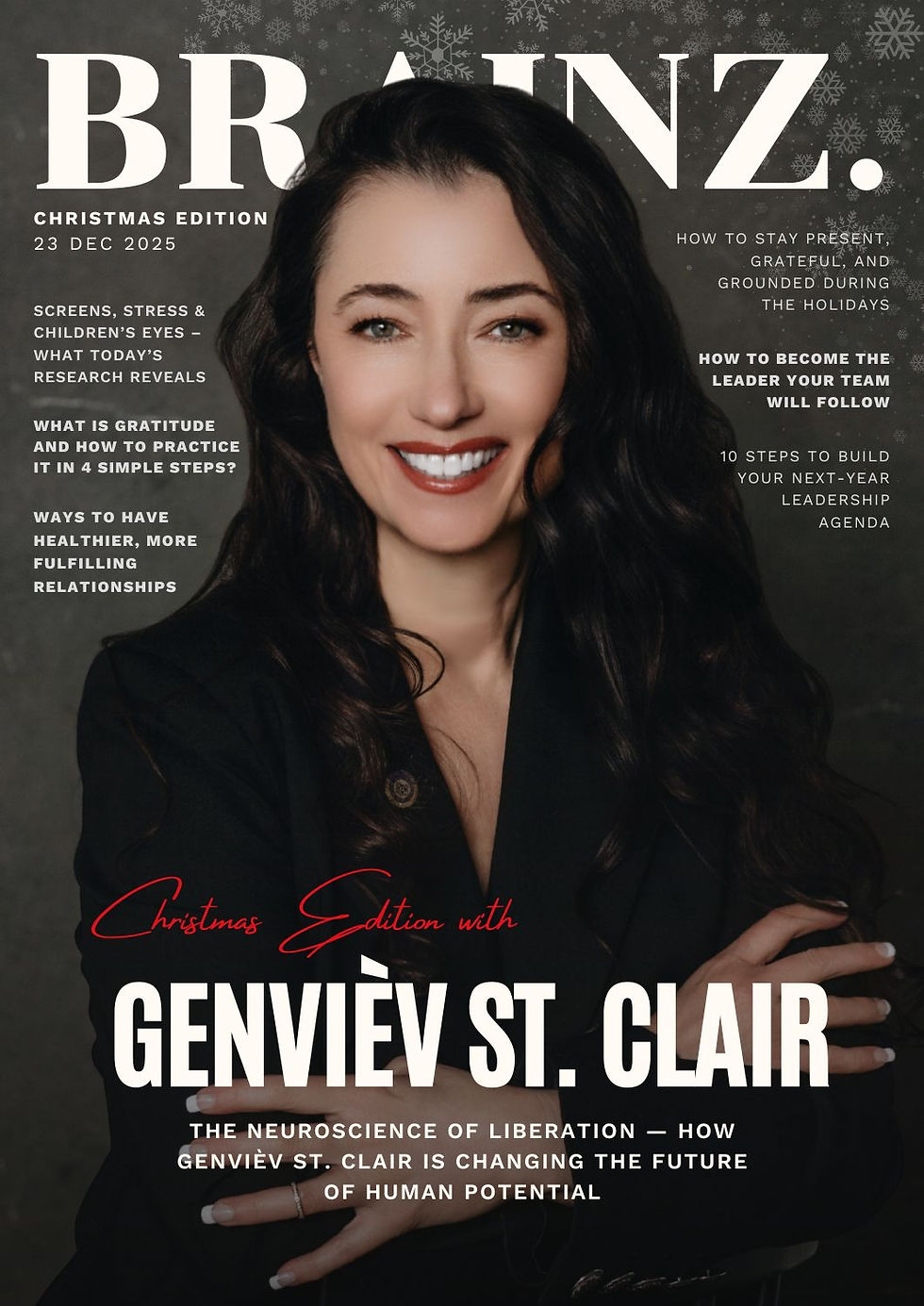Countdown Brain Hack — When 39 is Equal to 11
- Brainz Magazine

- Mar 31, 2021
- 4 min read
Updated: Apr 1, 2021
Written by: Rachel Paling, Executive Contributor
Executive Contributors at Brainz Magazine are handpicked and invited to contribute because of their knowledge and valuable insight within their area of expertise.

Over the last few months, I have been swimming a lot, and when I am swimming, many things go churning through my mind. It is my declutter mind time, but I confess I easily get bored when repeatedly I do the same thing. Running and swimming are often hard for me as my mind starts to get hungry and needs food for thought. Nevertheless, I have been pushing myself to actually do 50 lengths before moving on to water aerobic exercises, giving my brain some variety. I force myself to stay focused doing those lengths. In some ways, it is the eternal fight to discipline the mind!

A few weeks ago, I had a eureka moment. Normally, while swimming my lengths, I always find myself counting upwards from one to fifty, and it is often heavy going. But, my eureka moment came from actually questioning if I would feel differently once I count backwards – from fifty to zero. And guess what? My mind actually felt better and happier counting down!
This really led me to question what was the difference and why did it feel different? Maybe counting upwards gives the sense of achieving a quantity of something. Maybe with a different activity, counting up might stimulate me as it is a feeling of accumulation. But as swimming lengths is tedious and boring for me, counting down gives me the sense of "I only have so many left to do, and once I get to zero, I will reward myself." This contrasts the counting up, which could go on for forevermore into infinity. Could that be the difference –finite or infinite?
In any case, it is about engaging the brain and finding the stimulus that works to achieve the goal. For me, the countdown from 50, 49, 48… 39... etc., while swimming gives me a greater sense of positivity and crossing off the lengths rather than counting upwards 1, 2, 3….. 11, etc. The 39th and 11th are in exactly the same position depending on whether you count up or count down, but both provoke such a different feeling in me.
How could this help when setting language goals? Maybe we could use the idea of the big picture, and we could categorize this as the already created or the yet to be created. Then I would need to find out from my coachee what type of person they are. In my case, I know I am an already created big picture person. This was proven to me recently when in my Russian language sessions, I needed to go and find the complete big picture of all the case endings to understand the complete task ahead of me and to strike them off one by one as I get more familiar with them.
On the other hand, some learners prefer to build up the picture along the way, and they like to discover the way it comes together and make their own connections on their journey of creation.
As a Neurolanguage Coach, with our brain-friendly grammar approach, we break down the grammar creating an overall big picture, but normally, I always say that this big picture is for the coach to use as the roadmap and script through coaching conversation. However, it is always useful to determine if the learner would like to have this big picture first or whether they would like to create it through their coaching conversation with the coach.
So, could we think about different ways of applying the count up or count down strategy when learning? For example, with language vocabulary learning, it might be an incentive to be counting upwards, making the learner feel that they are adding and accumulating to their pool of words or on the other hand, counting down on a certain number of sentences to translate could generate the sense of whittling down a designated number.
Discovering how to stimulate the mind and brain when learning or training is key to blast through the limitations and the cop-outs – in modern terms, we could call it a brain hack. I would be curious to see how YOU can hack your brain with the count up, count down strategy as we all continue on our eternal quest to optimize learning, making it faster and more efficient for us all.

Rachel Paling, Executive Contributor Brainz Magazine
Rachel Marie Paling is an International Game Changer in Education, in particular, the education of languages. She has created the method and approach Neurolanguage Coaching, which incorporates professional coaching and neuroscience principles into the learning process. She coaches and trains teachers worldwide, transforming them into certified and ICF accredited Neurolanguage coaches and has created the Neurolanguage Coach network with over 700 NL Coaches in just over 70 countries worldwide and is now bringing the approach to schools and institutions over the world through her licensed trainers and in nine languages. Rachel started teaching language at 17 and has a BA Honours in Law and Spanish, MA in Human Rights. She is a qualified UK lawyer, MA in Applied Neuroscience, and a PCC ICF Life Coach. She is the author of the books Neurolanguage Coaching and Brain-friendly Grammar and has written numerous blog articles about learning, coaching, and neuroscience. She has spoken at many international conferences, and her company was awarded the Bronze Award at the Reimagine Education Awards 2019 in the Science in Education category. She is dedicated to the shift in education and is currently establishing an educational foundation to bring coaching, neuroscience, and heart science into educational processes.










.jpg)